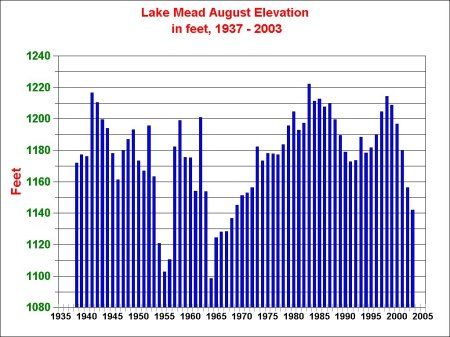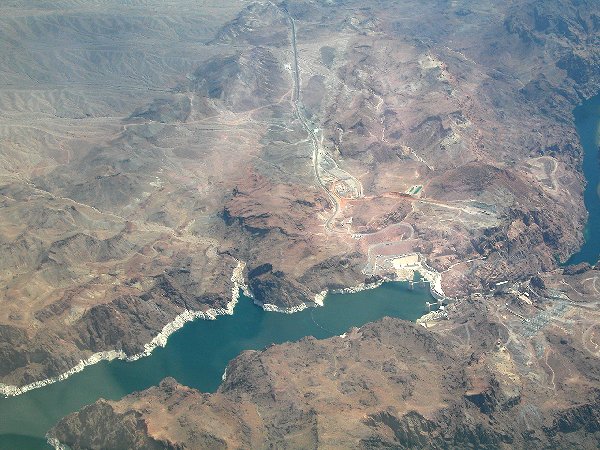
|
 |
| A two story sightseeing boat on Lake Mead is dwarfed by the white ring around the lake. The white ring is rock area exposed due to the dropped level of the lake. | Click HERE
or on the graph to see a larger version.
About 88 percent Southern Nevada's water is derived from the Colorado River. The other 12 percent of their water comes from groundwater that is pumped out through wells. Lake Mead Elevation Data |
